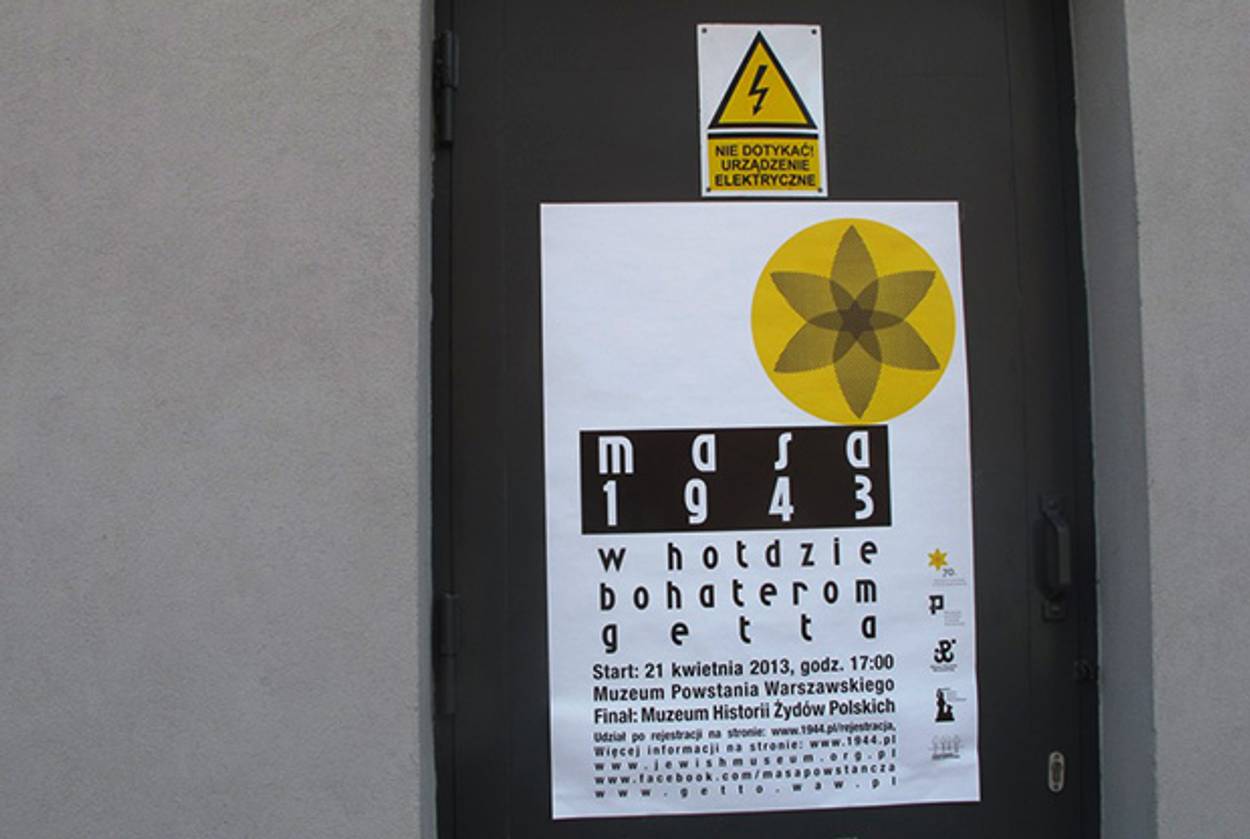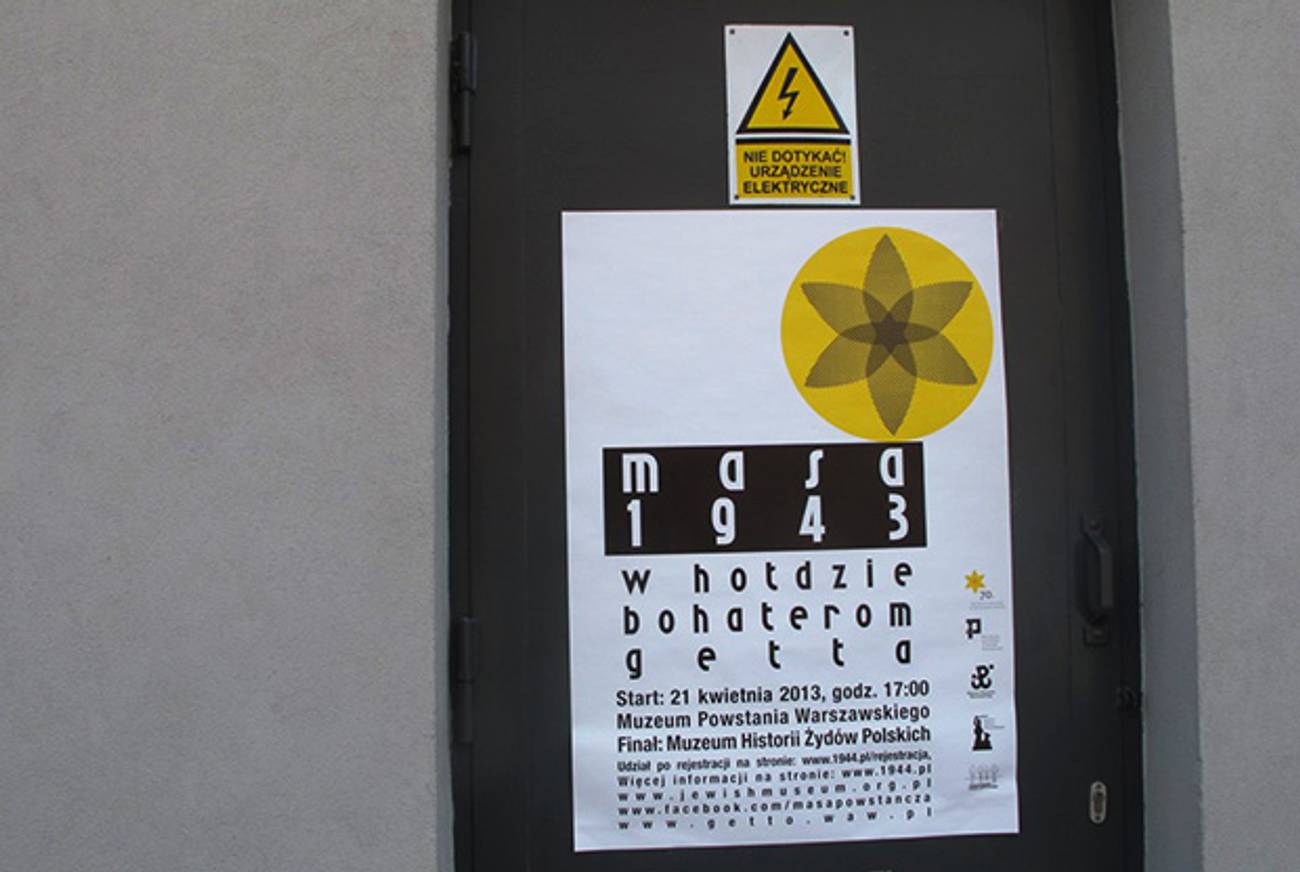Ride of Their Lives
New Jewish museum reaches out to Polish cyclists




If all goes according to plan, this Sunday, sun or not, a hundred volunteers from the transportation advocate Critical Mass will block intersections in Warsaw while 1,500 cyclists ride 11 kilometers through the former Jewish ghetto behind a van blasting Polish Klezmer Jazz. Riders will be wearing free matching T-shirts emblazoned with a hybrid six-pointed star-cum-daffodil to cap 3 days of city-wide commemorations of the 70th anniversary of the Warsaw Ghetto uprising.
Lovely, no? But nothing is simple about memory in Warsaw. The route of Masa 1943, as it’s being touted on Facebook (where registration is still open) and on posters across town, traces an inward spiral from the Warsaw Rising Museum, a contentious repository of Polish national memory and historical recreation that took years of wrangling to be completed, to the new Museum of the History of Polish Jews, a contentious repository of Polish Jewish memory that took years of wrangling to be built and will open tomorrow. The ride is part commemoration, part giant tour group, part Sunday sport, and part feel-good PR for the museums and inter-institutional politics.
Taken together, what the ride appears to symbolize is a fragile kind of détente. The Rising Museum (its email addresses end “1944.pl”) has hosted bike rides together with Critical Mass for 7 years on a day in August that celebrates Polish resistance, but when representatives from the new Jewish museum, whose living contingent numbers no more than 500 people, approached them recently for their expertise in managing volunteers and organizing extramural hijinks, the idea came up that a bike ride might be a good way to reach out to the youth that are the target, after all, of this hefty institutional investment in memory. “The subject is Old Warsaw,” Anna Kotonowicz, the young press agent, told me in the book-lined top floor administrative offices of the Rising Museum, “but it’s a modern way to present it.”
But present what? The ghetto was annihilated, a new Warsaw built over top of it. Like genocide museums and battlefield sites around the world, from Cambodia’s Killing Fields to the battlegrounds of our own Civil War, Warsaw has few relics to show—or, in this case, ride to. (“It wasn’t hard to choose a route,” said 25-year-old Jacek Chalupka, a new staffer at the museum and the main logistics man for the event. “There aren’t that many buildings left.”) As Kotonowicz put it, people want “to see, feel, and touch this history.” The organizers, youthful and energetic as they came across, made no bones about this lack. Their instructional materials acknowledge: “For this journey, one should be equipped with a helmet and a high-visibility jacket and, most importantly, with imagination that will allow to see the ‘invisible city,’ hidden under the walls of post-war buildings.”
“It is something light,” Kotonowicz told me. “It is not a typical lecture in a classroom.”
For Chalupka, the ride is just one of many “urban games” that break the bounds of the traditional museum, luring its visitors to see the surrounding city with its many valences and layerings. Recently, 15 to 20,0000 people came out for what he called a “giant karaoke”: songs of the Polish resistance belted out in unison in a public square. Another was a contest with scavenger hunt: clues led participants from one 1944 historical site to another. When I pressed Chalupka and Kotonowicz that this sounded like entirely too much fun, they both laughed and insisted it was serious. Playful, yes. And then, in the next beat, looking delighted, Kotonowicz conceded: “OK, it was fun.”
If this ride is like the others, at the end, Kotonowicz said, gathered in the park across from the Jewish museum, the cyclists will raise their bikes over their heads and ring their handlebar bells.
“As a way to honor the dead?” I asked.
“No,” Kotonowicz said. “It’s a Polish way to show your appreciation, and also to show your strength, that you can lift your bike over your head, that the ride did not defeat you.”
Matthew Fishbane is Creative Director at Tablet magazine.